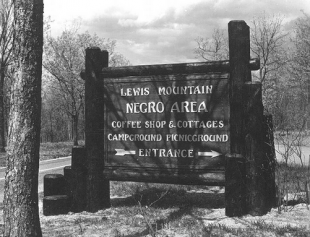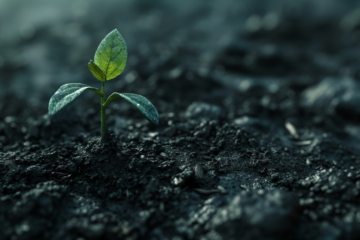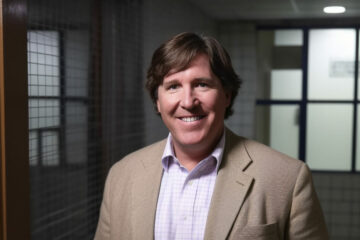There’s No Place to Escape Them Now
 The regime in Washington is now spending millions to bring “racial diversity” even to the wilderness.
The regime in Washington is now spending millions to bring “racial diversity” even to the wilderness.
EDITOR’S NOTE: The left-leaning article excerpted below is right about one thing: Parks and natural areas are frequented almost entirely by White people in this country. But the author is wrong when he claims 1) that this is a problem and 2) that more “diversity” programs and “inclusiveness” and atoning for past “racism” will make any difference. As America goes Third World, park use — and funding — will evaporate in lock-step with the disappearance of Whites. Eventually, our National Parks will be as trashed and neglected as downtown Baltimore, and no one will be around who cares. Meanwhile, Crips in the woods, anyone?
Blacks and Mestizos simply have little or no love for Nature (or any other kind of refined spiritual experience) and simply regard it (as do the worst kind of Whites, and most Jews) as something to be exploited and used (if it is noticed at all in the process of exploiting Whitey).
Your editor once resided in a city that was 50 per cent. non-White, with most of that 50 per cent. being Black and the rest Mestizo. Meetings and seminars in that city relating to Nature and the outdoors — lectures on local plants and wildflowers, volunteer groups to maintain parks and trails, hiking meetups, and the like — were almost always attended by an audience that was 100 per cent. White. When it wasn’t 100 per cent., it was 90-plus per cent.!
Maybe there’s a deep cultural reason for the old mythological place-name “Blackstone Camp” (“Blacks don’t camp”). As one wag put it, “In all fairness, former Congressman Jeremiah Haralson, a Reconstruction-era Black congressman, after leaving office went to Colorado and was eaten by a bear — the only congressman, to my knowledge, to have been eaten by a bear. It might have been a polar bear, or, as the Russians call them, white bears. So it all makes sense.”
* * *
THE BREATHTAKING beauty of the Pacific Northwest seems perpetually in your face — the jagged snow-capped peaks of the Olympics, the rolling mountain ranges of the Cascades.
There are times Mount Rainier seems so close, it’s almost like you can reach out and touch it.
Almost.
Yet some people spend their entire lives seeing these mountains from every possible angle without ever visiting them.
That is particularly true for people of color, and not just in the Pacific Northwest but across the United States, where studies and anecdotal evidence show they are among the most infrequent users of state and federal lands.
A 2015 outdoor participation report by Outdoor Foundation found that, in 2014, 73 percent of Americans who participated in outdoor activities were White. [That seems phenomenally low. They must be counting midnight basketball as an “outdoor activity.” — Ed.]
In recent years, federal and state land-management agencies have been collaborating with private outdoor groups and organizations on ways to diversify wild and wide-open spaces — with a particular emphasis on the next generation.
It’s simple math: Today’s young people, the most diverse generation in US history, will determine the future of our public lands and waters. And if they never use these places, then they’ll feel no connection to them.
This also was the theme of remarks this week by U.S. Secretary of the Interior Sally Jewell in commemorating National Park Week in advance of Earth Day.
She warned that climate change and the sale of public land for private use are threatening these national treasures. Park visitors are baby boomers like herself, she said, older and White — a reality that doesn’t bode well for the future.
If the National Park Service, in its centennial year, can inspire people from all backgrounds to love the great outdoors, she wrote in her remarks, “the next generation of America’s elected officials, scientists, philanthropists, teachers, and Supreme Court justices will understand the value of conservation and public lands.”
Only for White people?
The National Park Services has a complicated relationship with race, as many of its parks followed Jim Crow laws and remained segregated through World War II.
Still, history is only one explanation for the lack of diversity in parks.
There are also negative associations with the wild: getting lost or being attacked. And some people of color believe there’s simply nothing out there for them.
For so long, images from these places — including of the park rangers who staff them — reinforced that belief because they seldom included people of color.
Romaine Deshawn Bush, a 29-year-old African American from Seattle, has heard a litany of excuses from friends. “That’s the kinda stuff White people do,” they tell him. His camping invitations to the guys at the barbershop would be met with fantastic tales about bears in the woods.
Change slow to come
Over the last decade, staff at the Washington Trails Association (WTA) discussed how to make the 12,000-mile tangle of public trails in Washington state more diverse. But lacking diversity within its own small staff, it struggled to find solutions.
On the other side of the country, another group had found one.
The Youth Opportunities Program (YOP) was born in 1968 of unrest spawned by the civil rights movement, when the Boston-based Appalachian Mountain Club (AMC) asked local civil rights organizations about taking urban youth outdoors as a way to help them cope.
The organizations responded that AMC’s mostly white staff should instead train organization leaders to guide African-American youth on these outdoor excursions, giving rise to a train-the-trainer model. YOP later expanded the program across the rest of New England, New York, and New Jersey.
Those trained — teachers, community and youth leaders — can borrow boots, snowshoes, camping gear, and other supplies for free through the program and can contact program leaders when they need help.
In nearly five decades, the program has helped bring more than 200,000 young people outdoors and last year partnered with 200 youth agencies, says Laura Hurley, spokeswoman for AMC.
One of them is New York City-based Community of Unity, which provides support and leadership to 12- to 22-year-olds who have either gotten into trouble — in or out of school — or simply need guidance or a way to connect. [Just what we need: “Troubled” “urban” “youths” just around the corner on the trail, five miles deep in the woods. Give me an angry mother bear any day. — Ed.]
In the 1990s, YOP became a model for the Bay Area Wilderness Training program in California. And last year, the WTA replicated it in Washington state.
Similar models have sprung up in Chicago, Austin, Los Angeles, and Boise, Idaho.
As they struggle to diversify their workforces, the National Park Service and other state and federal land-management agencies are also moving to bring diversity to public recreational areas by forging alliances with local outdoor groups.
Outdoor Afro, for example, which grew from a blog into a 28-state organization connecting African Americans to outdoor experiences, has partnered with the National Wildlife Federation to create wildlife corridors closer to where people live, says founder Rue Mapp.
And Latino Outdoors, a national Latino-led outdoor education organization with members in 10 states, received help from the U.S. Forest Service with transportation, as well as loans of snowshoes and hiking boots. And they’ve used the WTA gear-lending library to borrow hiking supplies.
“We need each other,” says Graciela Cabello, Latino Outdoors’ national director. “From the park ranger in D.C. to the kayak instructor in Colorado, how do we leverage this broader network to build the next generation of conservation stewards?”
* * *
Source: The Westerner and National Vanguard correspondents






When I worked for the mining industry in central Western Australia (Yilgarn Gold belt) I saw first-hand conservation Australoid style. Here I am talking about true Australoids not whites with a dab or two of the tar brush, but blacks so black that they could have conceivably just fallen out of a eucalyptus tree. They did not worry about using bins or taking their rubbish to the tip (waste dump) instead they just threw it out of the window, which often was devoid of glass. You also had to be very careful when going for walks. Australoids do not maintain their white-built toilets very well so they just drop their feces anywhere that takes their fancy. They find toilets an inconvenience – it is so much easier to just use… Read more »
Perhaps national parks will soon be condemned as a “legacy of racism.” They are, after all, a legacy of “racists.” As Roger Pearson has noted in Heredity and Humanity, and Nelson Rosit has addressed in a fairly recent article in The Occidental Quarterly, racialists like Madison Grant and Theodore Roosevelt played an important role in early American conservationism. Parks are also a bastion of “White privilege” in the sense that they’re used almost exclusively by Whites.
It’s time to rid the North American continent of introduced and invasive species from Africa, South America, and Asia.
Who says Kneegrows don’t love the great oputdoors? After all, they never left the jungle.